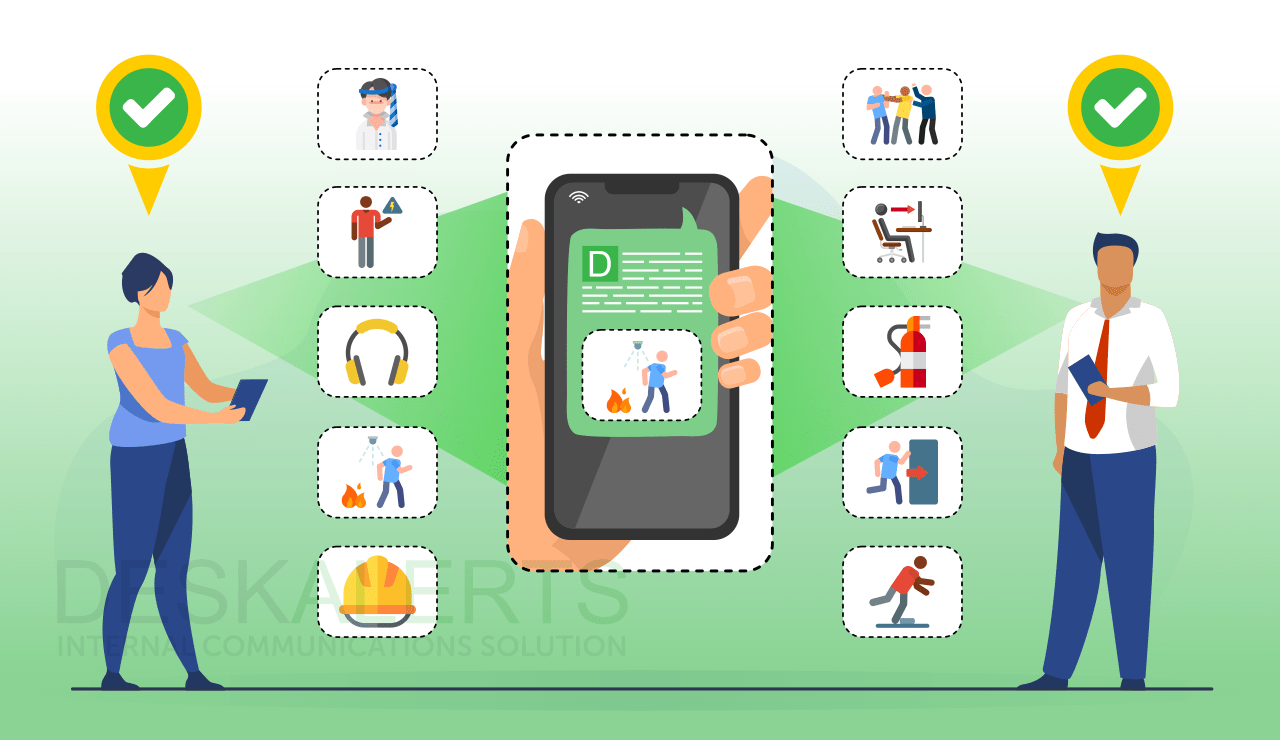
Employers have a duty of care to provide their employees with a safe workplace. When we think of workplaces, we usually think of an office, a factory, a building site, a store or another physical facility. Company vehicles are a workplace for many employees and there is also an obligation to ensure that employees who drive at work are safe.
Accidents in company vehicles can be extremely costly. According to the Occupational Health and Safety Administration in the US, a work-related car accident will cost an employer around $74,000. By promoting driving safety in the workplace, you can help to reduce the risk associated with workplace car accidents.
What can employers do to ensure workplace driving safety
Employers can take several steps to encourage employees to be safe drivers, regardless of the weather, road and traffic conditions that they may encounter. By applying training, knowledge, good judgment and driving skills, employees can make better decisions that will help them arrive at their destination safely.
1. Consult with staff over fleet vehicles
Every industry is different and there are different reasons to drive for work, and different types of vehicles that will be used. Staff in the freight and logistics sector spend most of their work live on the road, often driving heavy vehicles. Some office-based staff may take a company car to a meeting every now and then. Regardless of what types of vehicles you use or how often employees use them, it’s important to provide appropriate consultation about the vehicles and ensure that everyone understands their features before driving them.
2. Have appropriate policies in place
It’s important that your workplace health and safety policies include work-related driving. When you have a need for employees to drive for work purposes, your policy should cover:
- Who is responsible for employee safety when driving for work
- How vehicles can be used
- How employees are expected to behave while driving for work
- What employees must do if there is an incident
- Any training or certification requirements.
Once you have the policy in place it is important to communicate it: people can’t follow it if they don’t know it exists. Send pop-up notifications with acknowledgments so that employees have to indicate that they have read and accept the policy: this helps to keep them accountable, while they also know that these policies are in place to ensure their safety while driving.
3. Provide appropriate training
All employees who have to undertake work-related driving should be given appropriate training. This should form part of your onboarding process, and it is also best practice to conduct refresher training.
Your training should cover:
- Road rules and other legal requirements
- Company policies, protocols and procedures
- Driver fatigue
- Road conditions
- Safe driving tips for
- What to do in an emergency.
To be certain that your employees understand what is required of them, you can send them pop-up quizzes. You can also reinforce your messages via channels such as corporate screensavers, digital signage and scrolling desktop tickers.
4. Maintain fleet appropriately
Providing safe vehicles for your employees to drive is essential. This includes having a maintenance program in place that ensures the continued safety and reliability of the vehicles in your fleet. You should always follow the service recommendations of the manufacturer and ensure that your vehicles are roadworthy.
5. Have mechanisms for staff to report safety incidents
Provide your employees with a way to report any maintenance issues or damage to company vehicles that will be seen and acted on by the appropriate person. 
Conclusion
Having appropriate rules in place about the safe use of vehicles in your company is extremely important. Not only do you need these rules, but it is critical you take the steps necessary to communicate them with employees so that you can help them be safe.
FAQs:
What are 5 safe driving practices?
When it comes to driving at work, there are five important safe driving practices for employees to follow:
- Make sure your car is properly maintained
- Always wear a seat belt
- Stick to the speed limit
- Don’t drink/take drugs and drive
- Don’t get distracted by phones and other devices.
What are some safety tips for driving?
Employees should consider the following safety tips when driving company vehicles or on company time:
- Understand when other vehicles might be in your blind spots
- Use a dash cam to help improve safety
- Understand what is a safe braking distance
- Be aware of other drivers who are aggressive
- Obey all speed limits
- Practice defensive driving
- Get plenty of rest before driving.
How do you drive safely in the workplace?
Employers can adopt several strategies to reduce work-related car accidents. These include educating employees, ensuring that all work vehicles are safe and properly maintained, ensure employees who have to drive for work get appropriate breaks and don’t work excessive hours and ensure there are disciplinary procedures for any drivers who fail to be safe.
What are the 7 keys to safe driving?
Driver error is the leading cause of automobile accidents. The 7 keys of safe driving, when followed, can help reduce the number of accidents:
- Be safety-minded
- Always be aware of your surroundings
- Don’t expect other drivers will do the right thing
- Always drive to the road conditions, even if that means doing less than the signposted speed limit
- Manage risks one at a time
- Eliminate distractions
- Always keep a safe distance between your car and the one in front of you.
 Caroline Duncan
Caroline Duncan








